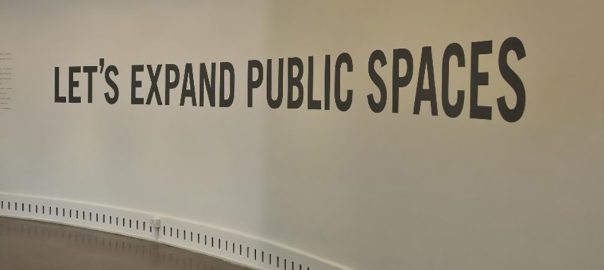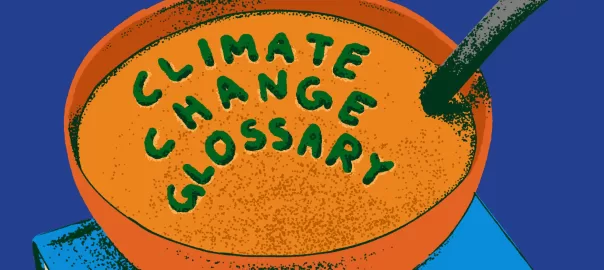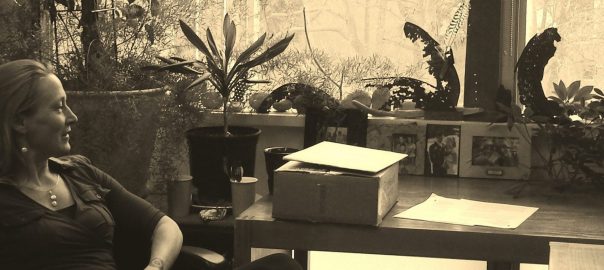A review of America’s Urban Future: Lessons from North of the Border, by Ray Tomalty and Alan Mallach. 2016. ISBN: 9781610915960. Island Press. 312 pages. Buy the book.
Canada and the United States share the longest unprotected border between two sovereign nations in the world. Current electoral politics in the U.S. aside, that status is unlikely to change, ever. Connected as they are by geography and commerce, it’s reasonable to assume that high degrees of similarity across several domains (economy, culture, etc.) will continue to exist. But, strangely, there are many fundamental differences between American and Canadian ‘ways’, many of which America’s Urban Future, published by Island Press in February, expose.
If I had to choose one word to describe the difference between U.S. and Canadian cities, it would be: more. In the U.S., more innovation. More poverty. More complexity.
I was born in Canada and spent the first half of my working life living there, working on civic issues—mostly in cities. As my consulting practice grew, more and more of my clients were in the U.S., and I have worked in the U.S. for 25 years. Ten years ago, I accepted a fellowship with a U.S.-based foundation, and moved. My tenure living in the U.S. has been largely spent in two very distinct cities: New Orleans and New York. In both cases, when Canadians have asked how I find living in the United States, I have replied: “I don’t live in the United States, I live in New Orleans (or New York).”
Cities in the U.S. are not monolithic, and the two I have found myself living in are quite different both from each other and from any other place in America. My living experience has been both inspirational and dispiriting, often at the same time. I think if I had to choose one word to describe what I know to be the difference between U.S. and Canadian cities, it would be: more. In the U.S., there is more innovation. More poverty. More culture. More commerce. More stress. More opportunity. More complexity.
When I was growing up in Canada, there was an enormous northward flow of popular culture, and there was a not-always-so-subtle hubris Canadians harboured towards the United States: that somehow we were better, more evolved. (I think it’s still the case in many quarters: particularly among those who elected the new federal regime in Canada, looking down on our current national election discourse in the U.S.) Our values were more progressive; we weren’t as materialistic; our native culture was purer. Canada, with all its economic and cultural insecurities, was less brash—and yes, nicer—and that was a good thing. It wasn’t until much later, as my professional life took me to the U.S., that I was confronted with the much harsher reality of the cultural differences between the two countries, and how those have manifested in the ways cities have formed in each country.
The sheer numbers of cities in the U.S., and the scale of its urban regions, are truly hard to forget when you live here.
As more people move to cities in Canada and the United States, and our economies continue to evolve away from resource extraction and manufacturing to the service, knowledge creation and creative sectors, and tech, I am hopeful we’ll have better learning networks connecting urban practitioners across the 49th parallel, who can report on what is working, and what is not. America’s Urban Future is a solid start.
 Ray Tomalty and Allan Mallach have done an exemplary job at analyzing various historical factors that have influenced the development of cities in Canada and the US. They’re both practitioner academics: one based in Montreal and the other in Washington, and they bring an appropriate mix of data analysis and more subjective commentary into this book.
Ray Tomalty and Allan Mallach have done an exemplary job at analyzing various historical factors that have influenced the development of cities in Canada and the US. They’re both practitioner academics: one based in Montreal and the other in Washington, and they bring an appropriate mix of data analysis and more subjective commentary into this book.
As a bi-national citizen, it continues to strike me as odd that we don’t have more mechanisms to foster learning between communities in Canada and the U.S. There are surprisingly few such mechanisms, particularly focused on urban life, and this volume is a worthy addition to what I hope will be a growing inquiry between the two most urbanized countries in the world. But the framing of this volume reflects a salient reality: the authors set out as their goal to look to Canada to find solutions to the problems in U.S. cities. American geo-political power and—when compared to Canada—sheer population numbers, constitute one explanation of the ethno-narcissism that is America. It pretty much is always about us here (I live in New York City). But surely, cities in both countries have lessons to learn and teach.
In Chapter 22 of The Death and Life of Great American Cities, urban sage Jane Jacobs, who chose to live in arguably the two most successful cities in the U.S. and Canada —New York and Toronto—set out “The kind of problem a city is ….”. She proceeded to debunk the pathologising of cities, advancing instead an analysis of cities as complex systems. Raised in a mid-sized city in Canada (London), I always found the literary depictions of cities as centers of depravity far from my experience—obviously I didn’t get out much). But in the U.S., cities come by that reputation more honestly because of a raft of trends, encouraged by horribly wrong-headed policy directions, that literally drove people from living downtown in dense, diverse neighborhoods, to moving to spacious, mono-cultural suburbs. The racial history of segregation, and the dynamics that remain to echo it, are unique to American cities and simply unavoidable. I was working here for more than a year before someone tipped me off that ‘urban’ was actually code for ‘black’, as was ‘inner-city’.
What the urban exodus of the 1970s in U.S. cities, colloquially referred to as ‘white flight’, left in its wake is sobering: sparsely populated neighborhoods with boarded up properties and vacant lots, stark public spaces euphemistically called ‘parks’, long-forgotten movie theaters and desolate main streets stripped of any vibrant retail.
I suspect one of the dilemmas these authors faced was trying to glean useful observations from the ‘success’ of Canadian cities that U.S. policy makers could actually implement. That’s pretty difficult because the socio-cultural circumstances, and resultant policy differences, are so fundamental, and so much of the ‘damage’ is already done. The federal government in Canada did not raze entire neighborhoods and destroy historically significant urban fabric; there was no ‘redlining’; and freeways, with a few notable exceptions, were not run through downtown cores, eradicating commercial corridors.
On the face of it, in general Canadian cities are superior by many measures. America’s Urban Future lays that out, chapter after chapter. They are denser, they have better transit, fewer vacant lots, less intense racial segregation, better mechanisms for regional cooperation and, in some cases, planning (!). But a Canadian reading this book may be less than satisfied with its focus on comparing the performance of Canadian cities to American ones: it doesn’t seem to acknowledge the challenges many Canadians experience living in their own cities.
For instance, Canadian cities have their own versions of contemporary segregation, often relegating newcomers earning lower incomes to the inner and outer suburbs. And particularly in the west, cities such as Saskatoon, Edmonton, and Winnipeg have serious poverty challenges that disproportionately affect the aboriginal populations that have relocated over the last 40 years from rural communities. Granted, Canadian cities weren’t hollowed out to the extent that American ones were over the last few decades. And they didn’t experience the rampant demolitions of urban renewal that continue to scar so many U.S. downtowns.
Nevertheless, both countries saw development trends, beginning in the post war period and ramping up in the 1980s and 90s, that favoured new housing development in the suburbs. So even though Canadian urban dwellers may not have been fleeing anything in particular, they certainly bought into the notion of large homes, lawns, and country clubs. When I drive now to Canmore (Alberta) or Sherbrooke (Quebec) or Owen Sound (Ontario), I am staggered by endless stretches of new housing developments with twee names: Harrison Creek, Chemin Bleu. The main drag of my hometown, Dundas Street in London, still languishes in its efforts to draw shoppers away from the vast parking lots and chain shopping of the White Oaks mall, some 12 miles away from the once lively downtown core.
In both countries, car-centric policy and investment continues to prevail. I remember a workshop I led in Calgary a dozen years ago to focus on the pressing controversy at the time: the siting of two new highway interchanges. Only last year, the Toronto City Council rejected an option to dismantle a section of its crumbling lakeside Gardiner expressway and replace it with a boulevard, instead opting—at double the cost—to shore it back up, ostensibly maintaining a three-minute commuting advantage! This, at a time when fewer and fewer teens are bothering to get their driver licenses, and the car industry—vital to both nation’s economies—is sputtering. And here in New York City, we can’t secure a commitment for funding for the busiest transit center on the continent—Penn Station—but billions are spent restoring a bridge across the Hudson River.
The population of the United States is roughly 10 times bigger than that of Canada. A slightly higher percentage of the Canadian population is urbanized, but more highly concentrated in three urban regions, whereas the U.S. has dozens of mid-sized cities in addition to its half a dozen mega-city (10 million +) regions. One of the ways you notice this is in terms of labour mobility: Americans with a professional education move more than Canadians. My colleagues here have done stints in Chicago, Los Angeles, San Francisco, Portland, Miami, and New Orleans. My colleagues in Toronto or Montreal tend to have made their careers in only one place. This matters, not only to the kind of housing stock needed (more rentals in U.S. cities), but also to how experience is shared across jurisdictions and how Canadian cities learn (or not).
Although I am not an academic, I have a grudging respect for scholarly analysis that informs public policy. America’s Urban Future, despite its reflection of the U.S.’s cultural narcissism, presents a thoughtful case as to why Canadian cities, in the main, work better. In its concluding chapter, it recommends:
- integrating local planning into regional and state systems that ensure sustainability and regulate growth
- better coordinating land use and transit planning through a strong legal and fiscal framework
- making more municipal service delivery systems more efficient, potentially through new state ‘machinery’ that make consolidation and reconfiguring boundaries possible
- more state leadership in ensuring levels of funding to city schools and transit infrastructure
- broader application of impact fees/development charges on developers to offset the real costs of infrastructure provision
- altering tax policy that currently encourages automobile travel and the assumption of higher mortgages to finance suburban housing
- create incentives for mixed income and use developments
- reforming immigration rules and practices to encourage and support newcomer settlement back into cities
Of all these, to my practical mind, the biggest challenge facing most of America’s cities is their lack of population: immigration to the U.S. has significantly lagged behind immigration to cities in Canada. Last year I spoke at a conference of New Jersey Mayors, which happened to follow the weekend North American media was flooded with images of Syrian refugees arriving to various European cities. I asked the New Jersey contingent: what if you were having to prepare to receive several thousand new residents over the next few days? To which, to a person, they replied: bring them on! Canada’s significantly higher rates of foreign immigration continues to revitalize its cities, perhaps making lower levels of internal migration moot.
I came away from reading America’s Urban Future worrying that it presented too favourably the relative success of Canadian cities, attributing it largely to there being better mechanisms for regional cooperation and the heavier involvement of the provinces. There is a subtext of paternalism here, which rubbed me the wrong way, as I tend to defer to options that maximize local autonomy and control. But I sympathize: there are so many struggling mid-size cities in the U.S. which seemingly continue to abandon common sense and permit development that will ultimately prove unsustainable. In the absence of any limiting, or even guiding, state authority, such ill-conceived development proceeds unchecked.
Yet many Canadian urban leaders have expressed a kind of ‘empowerment envy’ for the strong mayor system often present in the U.S. But, as these authors point out, that’s not always a good thing in the long run, as these mayors pine for policy leadership from ‘senior’ levels of government. (And Canada has had its share recently of flagrantly awful mayors, where a ‘weak’ mayor system thankfully limits the damage.) As in Canada, in the U.S., the federal government is where the public money lands, so suggesting that there be strings attached that incentivize transit investment and dense development is logical—but because the U.S. is so dominated by sophisticated federal lobbyists, the manifestation of such a system is hard to imagine any time soon.
To wit, the recommendations in the book’s final chapter which I summarized above included that the U.S. ‘create stronger state machinery to further [the] consolidation and reconfiguration of municipal boundaries and service delivery systems’—as if they’ve been such a raging success in Canada—is a terrible idea. Toronto is still suffering the extraordinary ill effects (financial, service delivery, local identity) of a forced amalgamation in the late 1990s, and a similar sweeping change imposed on Montreal by the Province of Quebec was actually overturned.
Just as the elders in my childhood could demonize America, I am apprehensive that these authors have tended to idealize Canadian cities for many of the wrong reasons. Are Canadian cities better because their provincial or federal overlords were more enlightened? Hardly. I think some of the reasons they are ‘better’ is simply because Canadian cities didn’t have the extraordinary concentration of wealth that spurred industrial development across the post-war United States of America, obliterating everything in its wake. Economic booms and busts in the U.S. are more like bumps and sneezes in Canada: it has a very stable banking system, and the peaks and valleys are much shallower. That insulates it: in good and bad ways.
So what if Canadian cities are more ‘livable’? What is curiously missing from this volume are any measures that speak to the economic or cultural productivity of each city. Which have the higher GDP? Are making better civic spaces? Generate more patents? Attract more visitors? Create better art? Obviously, measurement is difficult, especially when it comes to the intangible things that make cities wonderful. Both of the authors are planners, so of course they’re going to focus on those outcomes that planning influences. But so much of what a city is, what makes it great, is outside of the immediate purview of planning.
At the same time, I recognize that the quality and attributes of places do shape our experiences of them, and, over time I suspect, the values we bring to them. Are Canadian cities generally more livable because of the values of those Canadians who designed them, or, are the values of urban Canada evolving, reflecting their experience of living in their cities?
To, alas, return to a common observation: in the main, Canadians are nicer—and so are their cities. But that just may not be enough of a reason for the U.S. readers of America’s Urban Future to adopt its recommendations. The U.S. remains the most productive economy in the world, and its economic success is largely driven by its cities. Until the costs of bad urbanization threaten to imperil the success of the U.S. economy, I think major course corrections are unlikely, just to make cities tidier, or nicer. Perhaps for their next book, Messrs Tomalty and Mallach could write about America’s Future, period, and the crucial role its cities will play in ensuring it.
Mary Rowe
New York City







Leave a Reply